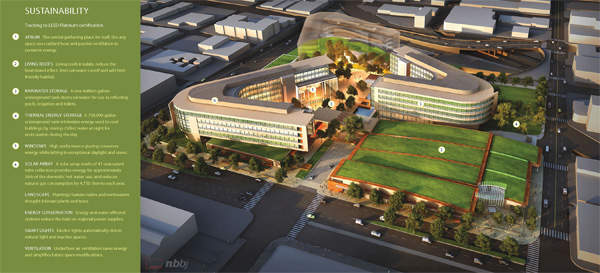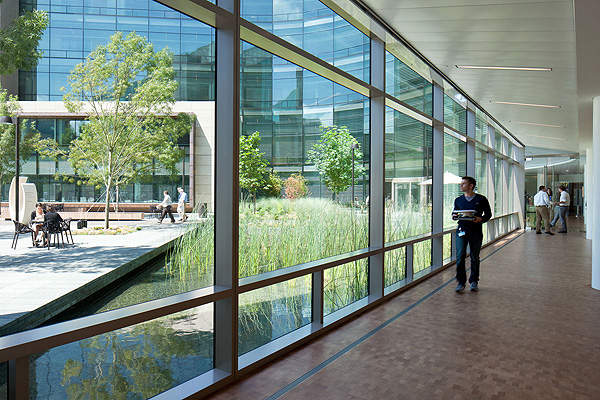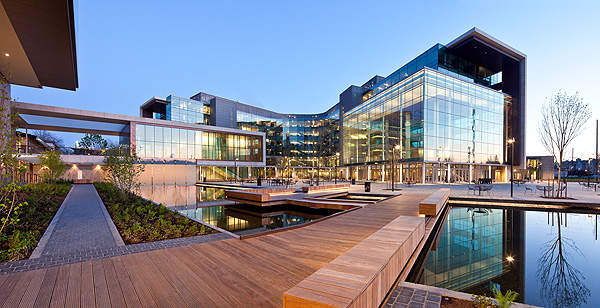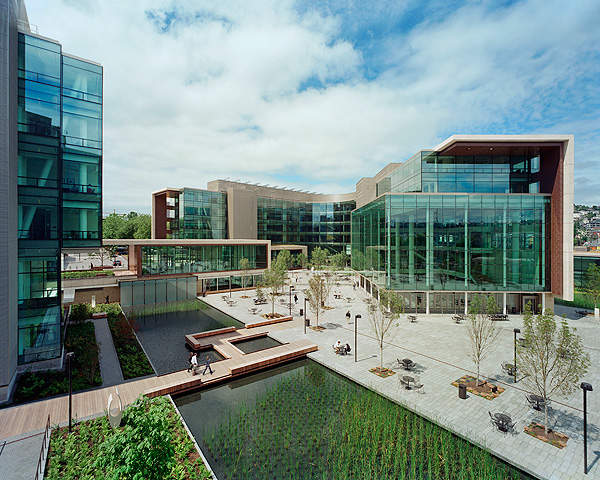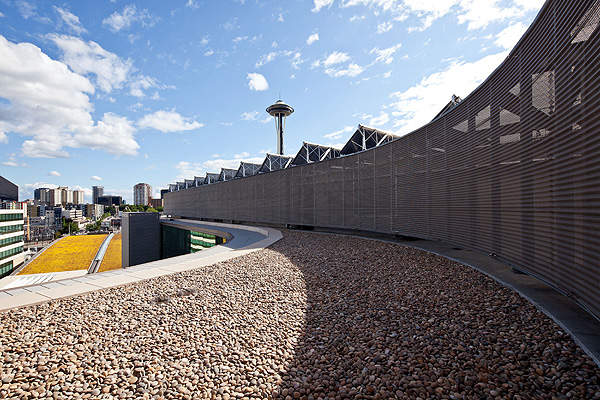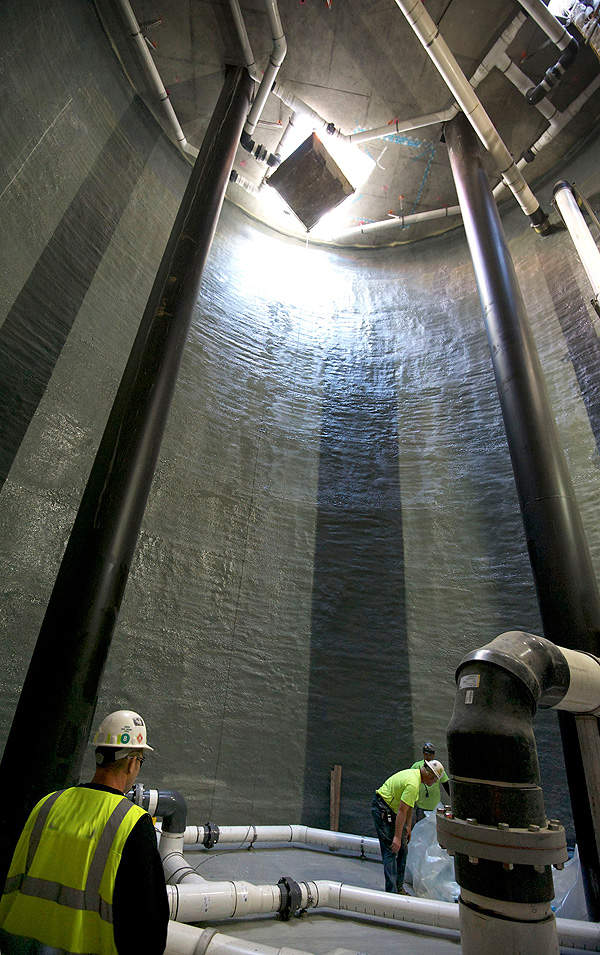The newly built Bill & Melinda Gates Foundation campus in downtown Seattle, Washington, is the largest not-for-profit LEED-NC Platinum certified building in the world. The office campus was designed by NBBJ. The firm was responsible for the architecture, interiors and workplace design, lighting and environmental sustainability of the facility.
Construction of the project was started in July 2008 and was completed in 2011. It was built at a cost of $500m.
The Bill & Melinda Gates Foundation had offices located in five different leased buildings. The office campus was conceived in 2004 to bring all the employees in the South Lake area under one roof. The campus also brings together thousands of grantees, leaders and partners sharing a common goal.
The project represents the foundation’s overall philosophy to support the environment and the neighbourhood and exceeds the green building features mandated by the city of Seattle. A former 12-acre asphalt parking lot site, sitting next to Seattle Center, was purchased in 2005 for $50.4m.
Design of the Seattle-based newly built campus
The campus consists of two six-storey buildings – Building A and Building B – comprising 900,000ft² of office space and a visitor Centre. The buildings are designed as two intersecting structures forming the shape of ‘V’. They rest on podiums with the cantilevered wings stretched outwards. They house a convening centre, a multistorey central atrium, reception areas and a learning centre. The design symbolises the company’s global reach of its philanthropic efforts, with roots held in the Pacific Northwest region.
The curved buildings create space for private landscaped courtyards at the centre. They also allow abundant flow of air and natural light into open green meeting spaces. They allow employees to interact, collaborate and learn. The office buildings accommodating 1,500 staff represent a long-term investment to ensure efficient workplace and operations. It is designed to have a life of 100 years. A 400,000ft² third building will be constructed based on the future requirements.
The 11,000ft² visitor centre was opened to the public in February 2012. It exhibits the problems and progress made by the foundation related to the US education, global health and development through interactive and artistic media, such as the Innovation & Inspiration Gallery.
The foundation also built a $15m Seattle Center Fifth Avenue North Garage in collaboration with the city. The underground garage was opened in July 2011. The four level parking facility features 1.5-acre of green roof and has been certified with LEED Gold. It serves the Seattle Center, with 300 spaces for campus staff and the foundation’s visitor centre. The campus has additional 400 car parking spaces.
Façade and landscaping of the Bill & Melinda Gates Foundation campus
Façade of the buildings is completely transparent with high glazed glass. The interior walls and fixtures are also built with glass.
Green spaces of the campus connect with the Seattle Center and surrounding buildings. Public art work from across the globe is featured in the reception area and on the exterior walls along 5th Avenue.
Green roofs on the garage (1.4 acres) and campus (half acre) insulate and control the building temperatures and the rainwater run-off. The living roofs filter the air and act as a natural habitat for insects and birds. Native and drought-tolerant landscaping surrounds the office buildings.
Sustainability of the largest not-for-profit LEED-NC Platinum building in the world
The campus is designed to save about 40% of energy consumption compared to a similar building. It incorporates efficient mechanical, plumbing, energy saving lighting and underfloor ventilation systems. Daylight, occupancy sensors, high performance façade glazing and natural ventilation reduce energy consumption.
Regional and recycled materials were used in construction. A rainwater underground storage tank of one million gallon capacity collects the hardscape runoff and recycles it for irrigation, toilets and reflecting pools. The central atrium uses passive ventilation and radiant heat.
A 750,000 gallon underground tank acts as a thermal storage system. It stores and chills water at night and recirculates it during the daytime to reduce the building’s cooling costs. Rooftops of the campus buildings are fitted with 47 evacuated tube solar collectors to generate electricity for hot water supply. It decreases the energy consumption of the campus by 37% and saves burning of 4,750th/y of natural gas.
Investment on the energy efficient technologies at the campus is expected to be recovered after 30 years of operations. It received the LEED certification from the US Green Building Council in October 2011.
Contractors involved with the Bill & Melinda Gates Foundation project
Gustafson Guthrie Nichol was the landscape architect. Sellen was the general contractor. Arup was the structural, mechanical, electrical, plumbing engineer and IT consultant. Seneca Group was the development manager. KPFF was the civil and structural engineer.
McKinstry was the mechanical contractor, Cochran was the electrical contractor and TechPMgroup was the technology consultant. AMA Alexi Marmot Associates and Judith Heerwagen were the workplace consultants. HKA Elevator provided the vertical transportation.
RWDI provided the wind and Morrison-Hershfield the waterproofing solutions. Walker Parking was the parking consultant. Olson Kundig Architects was the visitor centre’s exhibit designer.

